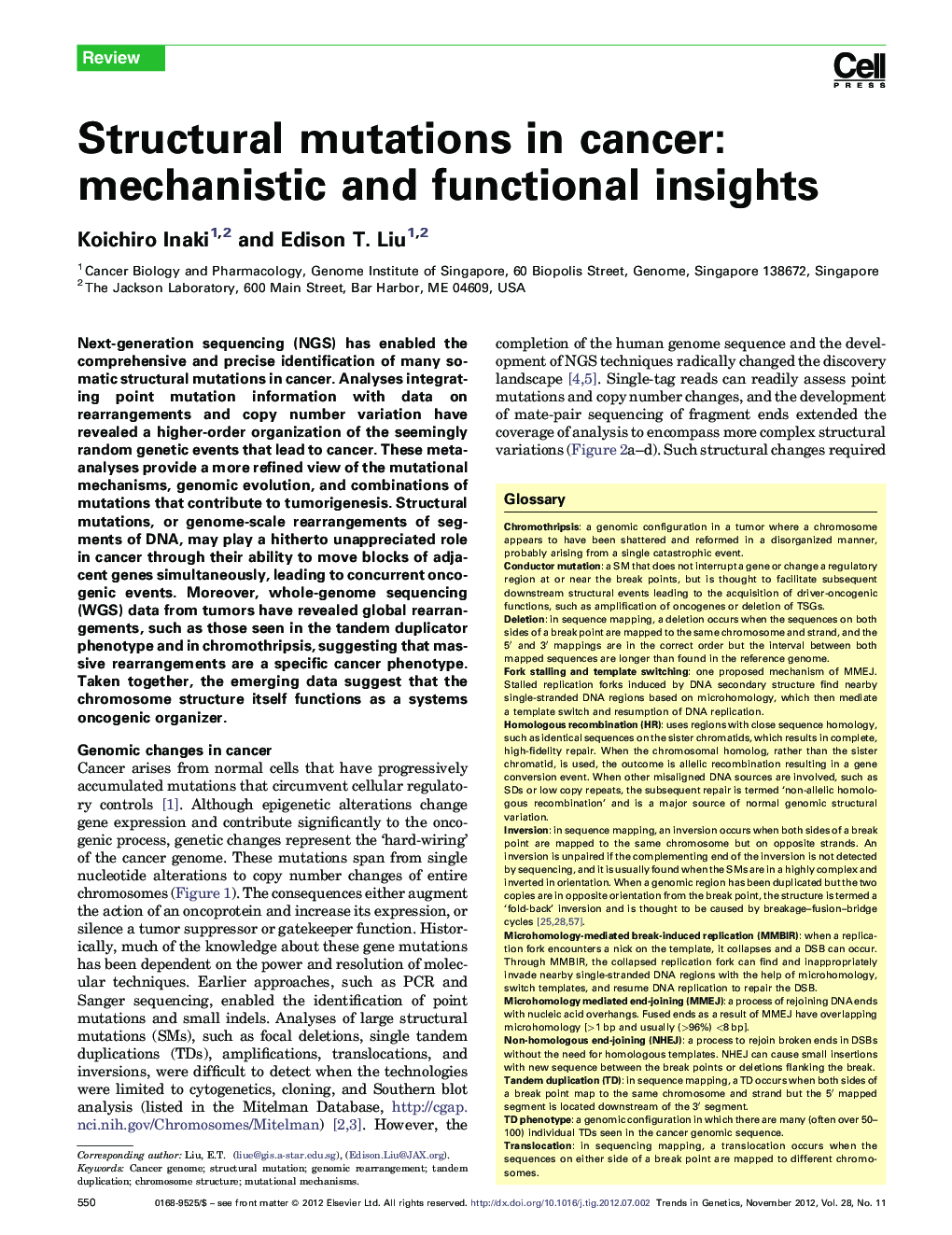| Article ID | Journal | Published Year | Pages | File Type |
|---|---|---|---|---|
| 5913154 | Trends in Genetics | 2012 | 10 Pages |
Abstract
Next-generation sequencing (NGS) has enabled the comprehensive and precise identification of many somatic structural mutations in cancer. Analyses integrating point mutation information with data on rearrangements and copy number variation have revealed a higher-order organization of the seemingly random genetic events that lead to cancer. These meta-analyses provide a more refined view of the mutational mechanisms, genomic evolution, and combinations of mutations that contribute to tumorigenesis. Structural mutations, or genome-scale rearrangements of segments of DNA, may play a hitherto unappreciated role in cancer through their ability to move blocks of adjacent genes simultaneously, leading to concurrent oncogenic events. Moreover, whole-genome sequencing (WGS) data from tumors have revealed global rearrangements, such as those seen in the tandem duplicator phenotype and in chromothripsis, suggesting that massive rearrangements are a specific cancer phenotype. Taken together, the emerging data suggest that the chromosome structure itself functions as a systems oncogenic organizer.
Keywords
Related Topics
Life Sciences
Biochemistry, Genetics and Molecular Biology
Genetics
Authors
Koichiro Inaki, Edison T. Liu,
